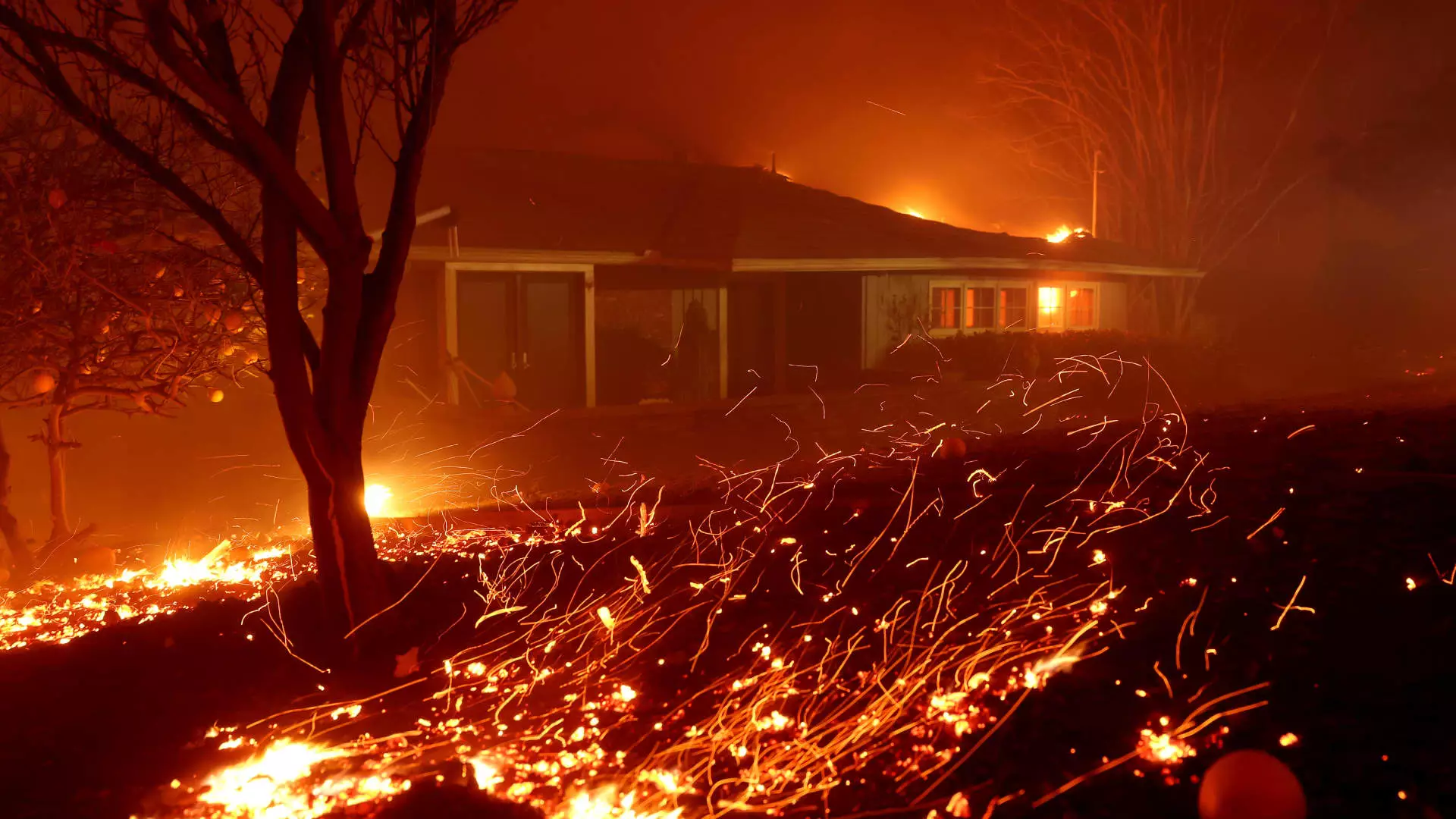The emergence of climate change as a definitive threat to economic stability is becoming monumentally clear, especially in sectors as sensitive to environmental fluctuations as real estate. Recent wildfires in Los Angeles have underscored this reality, foreshadowing a potential calamity that extends beyond California’s borders. As we delve into the implications of these natural disasters, it becomes apparent that insurance costs will not only escalate in LA but will also reverberate throughout the nation’s real estate market, presenting a new paradigm in property valuation and security.
Insurance is poised to be the first victim of this evolving crisis, with prognostications indicating a national average increase of 25% over the next three decades. According to analysis from First Street, a prominent climate-risk research firm, an alarming 14% of this increase stems from the present underpricing of risks associated with climate change, with the remaining 11% attributable to the unforgiving advance of climate-related threats. In essence, insurers are beginning to recognize that their long-held assumptions regarding risk management are now outdated. The rates of growth will not affect insurance alone but will herald widespread economic consequences that could shake the foundations of the real estate market.
The shifting landscape is not uniformly catastrophic; rather, it varies significantly across geographic lines. While the average decline in property value is projected to be around 3% nationwide, certain regions are expected to endure dramatic losses, particularly in parts of Texas, Florida, and Louisiana, where home values could face depreciation of up to 50%. This uneven impact raises critical questions about the future of housing markets, where areas once thought to be robust may rapidly decline.
The expert predictions regarding home value depreciation are unsettling. With the looming specter of climate change hanging over the market, an estimated 20% of homes nationwide are expected to see some form of devaluation within the next five years. With this anticipated drop in home values, the fear of a repeating cycle akin to the real estate crash of 2007-2012 becomes increasingly palpable.
Insurance Market Turmoil: A Southward Spiral
The fragile state of the insurance market has prompted industry analysts to examine how these changes will affect mortgage accessibility and property sales. As insurance premiums rise, potential homebuyers may find themselves priced out of the market, compounding the struggles faced by current homeowners who might be unable to sell their properties at their perceived value. The ramifications could lead to reduced transactions in the housing market, which would, in turn, create a feedback loop of falling prices.
Analysts like Dave Burt of DeltaTerra Capital recognize the parallels between today’s situation and the past subprime mortgage crisis. The economy is experiencing a perfect storm, where rising climate risk, combined with flawed insurance models, is straining the market. As insurers wrestle with how to price climate-related risks effectively, the fallout could extend far beyond real estate, threatening financial institutions that rely heavily on stable property values for investment.
Foreclosure Rates: A Secondary Fallout
The correlation between natural disasters and foreclosures is a critical concern. Historical data reveals alarmingly high foreclosure rates following major environmental catastrophes. For example, areas affected by Hurricane Sandy in 2012 saw a staggering 46% increase in foreclosures, while the aftermath of the 2008 floods in Iowa led to a 144% spike. Such events serve as stark warnings, indicating that the ripple effects of climate change can extend deep into the financial fabric of communities.
With the mortgage market beginning to grapple with these growing risks, organizations like Fannie Mae are slowly starting to explore the implications of climate change on underwriting, albeit at a snail’s pace. The industry’s reluctance to fully integrate climate risk into financial decision-making hampers the ability to address the imminent challenges, leaving homeowners and potential buyers in a precarious situation.
The push for community resilience measures is becoming crucial in addressing the consequences of climate changes. Nevertheless, the contrasting political climate hampers progress; recent actions by the Trump administration signal a concerning retreat from essential safeguards like the Federal Flood Risk Management Standard. This jeopardizes the backbone of infrastructure designed to withstand future catastrophes, thus leaving communities vulnerable.
As property values shift, insurance rates soar, and political action wanes, the United States stands at a crossroads. The urgency of adapting to climate realities cannot be overstated; it is essential for homeowners, investors, and policymakers alike to recognize the transformative impacts of climate change on the real estate industry. This new, unpredictable landscape requires immediate attention, innovative solutions, and proactive measures to safeguard economic stability for generations to come.

